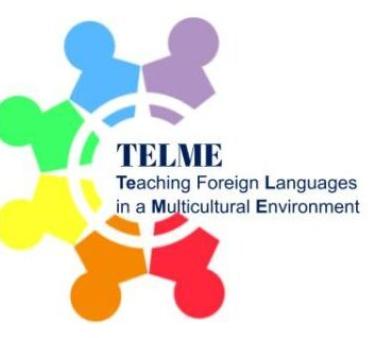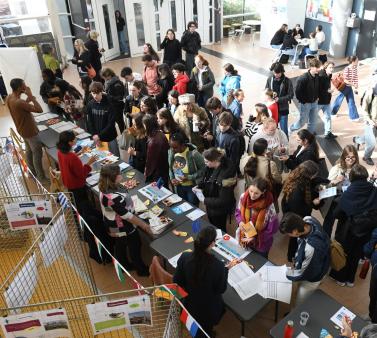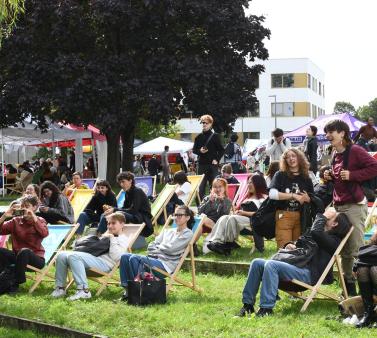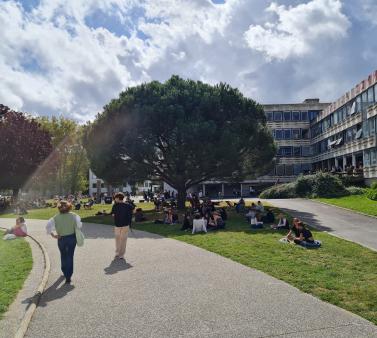Objectives
The Master’s degree in Visual Arts combines artistic practice and theoretical research. Its scientific objectives are focused on this blend of skills. A compulsory visual art and artistic project that is coherent, accomplished and well-designed concludes these two years of study. The artistic work is combined with an extensive research-based dissertation that will be defended before a jury at the end of the second year.
Skills
-
Proficiency in personal visual art practice.
-
Ability to assess how coherent this practice is with the contemporary field.
-
Knowing how to put personal practice into perspective using theoretical knowledge (critical, aesthetic, historical).
-
Knowing how to position personal practice in this field of knowledge.
-
Good command of the theoretical field.
-
Knowledge of the latest developments in art and the art world.
-
Ability to properly document one’s work.
-
Ability to properly document the work of contemporary artists.
-
Ability to analyse a work of art.
-
Ability to organize, comment on and document a contemporary art exhibition in physical space or digital format.
-
Awareness of professional standards and the institutions that support and implement contemporary art.
-
Organization of oral presentations and public speaking.
Course Content
This is a two-year course.
Year 1 covers methods and objects of scientific research in the field of visual and contemporary art(s). Practical artistic workshops enable students to develop skills and techniques in different areas (pictorial, sculptural, photographic, digital, etc.). Digital art creation, like the other techniques, will not be worked on as a separate subject but as and when it arises in the artistic field.
This course is mainly focused on developing a solid artistic skill alongside analytical skills in the theoretical field. This is how the practical classes develop critical reflection, on both the objects produced and their specific theoretical field. Aesthetics and art theory teaching is therefore complementary to what is learned in the workshops as it enables students to consolidate this reflection through enhanced knowledge and encourages them to be disciplined in their research.
In the second year, students apply their skills to an academic research project involving all of the methodological, theoretical and artistic demands and constraints related to the field of visual arts. Students are expected to submit work that is fitting with the contemporary visual arts domain and to demonstrate their academic writing skills, showing that they can develop their knowledge of the visual arts field. Students will acquire the following skills: proficiency in and development of a personal artwork, knowledge of contemporary art (artists, movements, history), ability to draw on concepts from the fields of aesthetics and the human sciences to be able to develop organized reflection on artistic works. The number of contact hours in year two is a lot lower than in the one-year Master’s degree (M1).




